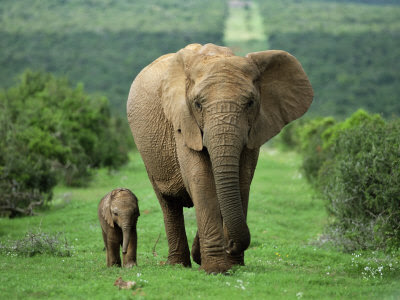The Life of Animals | African Bush Elephant | The African Elephant is the largest living terrestrial animal, normally Reaching 6 to 7.3 meters (19.7 to 24.0 ft) in length and 3.5 to 4 meters (11.5 to 13.1 ft) in height at the head, and Weighing the between 6.000 to 9.000 kg (13.000 to 20.000 lb). The animal is characterized by its large head; two large ears That cover its shoulders and radiate excess heat a large and muscular trunk; two prominent tusks, the which are well-developed in Both sexes, although more commonly in males; a short neck a large, barrel-like body four long and heavy legs and a Relatively short tail.
The trunk is the most characteristic feature of the African Bush Elephant. Lions in Chobe National Park in Botswana have been observed for some time taking Both infants (23% of elephant kills) and juveniles. Humans are the elephant's major predator. Elephants have been hunted for meat, skins, bones, and tusks. Increased Elephant trophy hunting in the 19th and 20th Centuries, tourism and Plantations increasingly attracted sport hunters. In 1989, hunting of the African Bush Elephant for ivory trading was forbidden, after the elephant population fell from Several million at the beginning of the 20th century to Fewer than 700,000. The population of African Bush Elephants was halved During the 1980s.
In 2006, an elephant slaughter was documented in Southeastern Chad by aerial surveys. This region has a Decades-old history of poaching of elephants, the which has Caused the elephant population of the region, the which exceeded 300 000 in 1970, to drop to approximately 10.000 today. The African Bush Elephant is Officially protected by Chadian government, but the resources and manpower provided by the government (with some European Union assistance) have proven insufficient to stop the poaching.
Human encroachment into or adjacent to natural areas where Bush Elephants occur has led to recent research into methods of Safely driving groups of elephants away from Humans, including the discovery That playback of the recorded sounds of angry honey bees are remarkably effective at prompting elephants to Flee an area.












